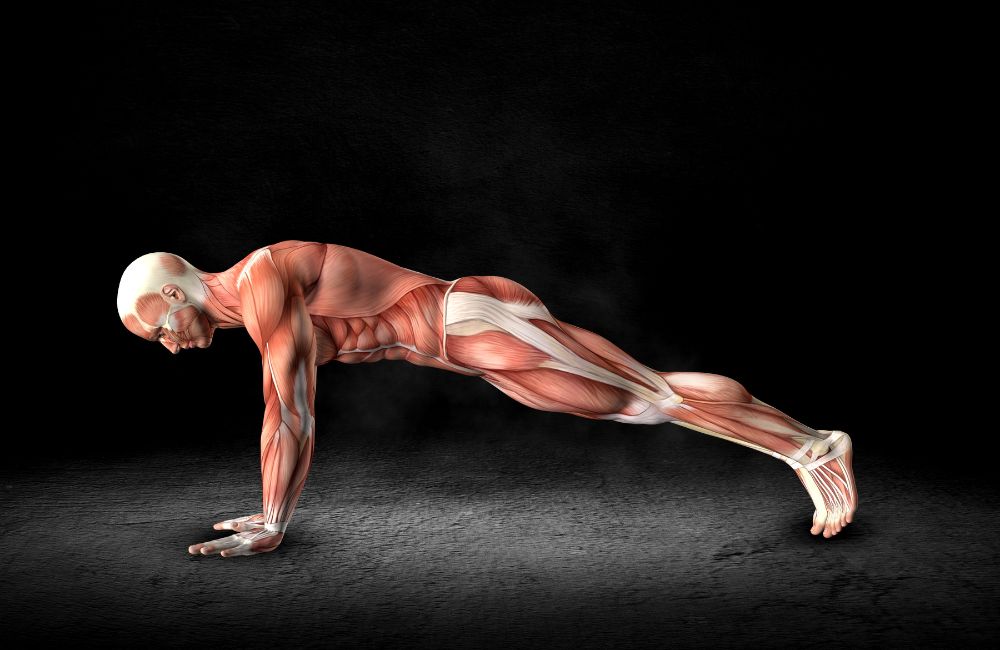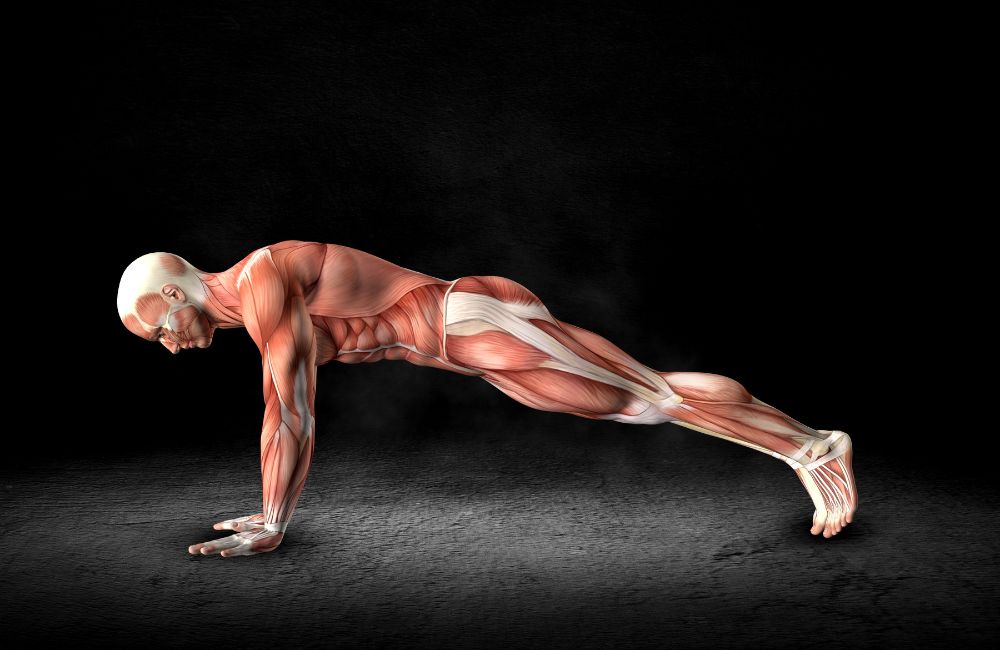
The push-up is a classic bodyweight exercise that has stood the test of time, renowned for its effectiveness in strengthening the upper body, core, and arms. However, it is a widely acknowledged fact that women often find push-ups more challenging to perform than their male counterparts.
While physical differences play a role, scientific research sheds light on the physiological and anatomical factors contributing to this disparity.
This article will explore the scientific evidence behind why women may find it harder to do push-ups than men.
Muscle Mass and Upper Body Strength

Scientific studies have consistently shown that men generally possess greater muscle mass than women due to differences in hormonal profiles. Testosterone, a hormone more prevalent in men, plays a significant role in muscle development.
Research published in the Journal of Applied Physiology (2006) found that men have approximately 30 to 40 percent more upper-body skeletal muscle mass than women. This disparity in muscle mass translates to a greater capacity for generating force during exercises like push-ups.
Muscle Fiber Type and Distribution
Muscles comprise different types of fibers, each with distinct properties affecting strength and endurance. A study published in the Journal of Sports Science & Medicine (2017) reported that men tend to have a higher proportion of type II muscle fibers in their upper bodies compared to women.
Type II muscle fibers are responsible for generating explosive power and strength, making men naturally better equipped for exercises like push-ups. Conversely, women have a higher percentage of type I muscle fibers, which are more suited for endurance activities.
Center of Mass
The distribution of body weight significantly influences the biomechanics of push-ups. According to a study published in the Journal of Biomechanics (2013), men typically have a higher center of mass due to their greater upper body muscle mass and overall body composition.
This higher center of mass allows men to maintain better stability during push-ups and engage their chest, shoulders, and arms more effectively.
In contrast, women’s lower center of mass, attributed to differences in body fat distribution, increases the challenge of supporting their body weight on their upper body during the exercise.
Sociocultural Factors and Training Disparities
Scientific research has also highlighted the impact of sociocultural factors on physical performance disparities between genders. A study published in the European Journal of Sport Science revealed that gender stereotypes and societal expectations influenced girls’ involvement in physical activities that emphasize upper body strength.
These stereotypes perpetuated the notion that women are inherently less capable of developing upper body strength, resulting in reduced opportunities for training and conditioning.
Conclusion
While scientific research confirms the inherent physiological differences contributing to women finding push-ups more challenging than men, it is essential to recognize that these differences do not limit women’s potential for improvement.
With focused training and encouragement, women can enhance their upper body strength and excel in push-ups. Understanding the scientific basis behind the challenge can help break down gender barriers in fitness and promote inclusive training approaches for everyone.
By debunking the misconceptions and providing equal opportunities, we can create a more equitable fitness landscape that celebrates and nurtures the strengths of both men and women.


